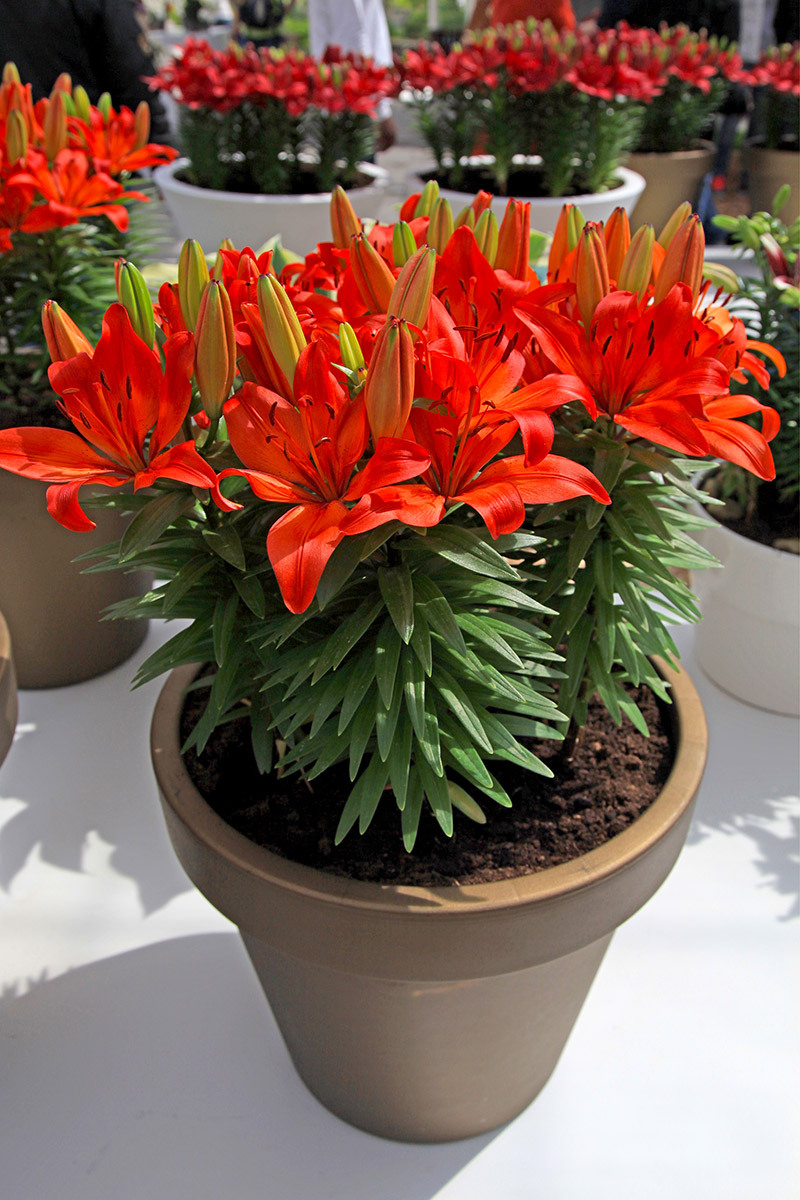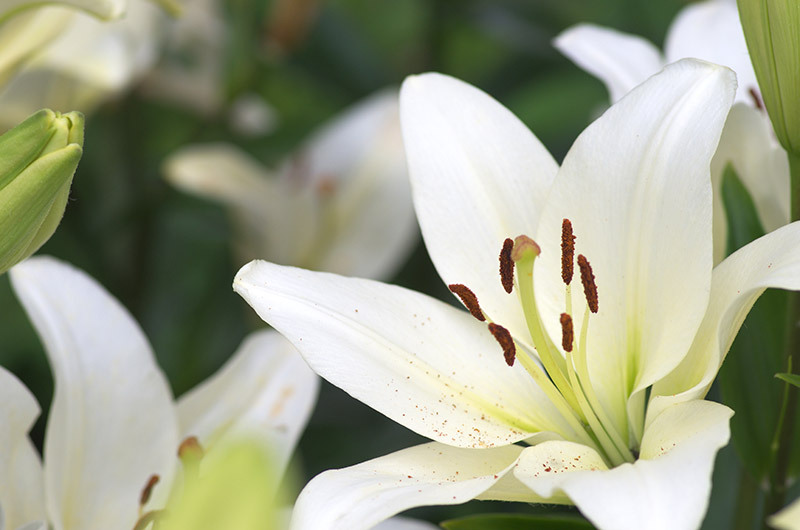Nurturing Your Beautiful Hydrangeas: Step-by-Step Guide
Posted on 15/08/2025
Nurturing Your Beautiful Hydrangeas: Step-by-Step Guide
Hydrangeas are cherished garden plants that capture the eye with their spectacularly colorful blooms and lush foliage. Whether you're a seasoned gardener or a beginner, nurturing your beautiful hydrangeas can be incredibly rewarding. In this in-depth guide, we'll explore every essential aspect of hydrangea care, from planting and soil preparation to pruning and dealing with common challenges. Follow these practical, easy-to-implement steps to ensure your hydrangea bushes thrive year after year.
Understanding Your Hydrangeas
Before we dive into specific steps, it's important to understand the basics of hydrangeas. Hydrangeas come in several species, with the most common varieties including:
- Hydrangea macrophylla (Bigleaf Hydrangea)
- Hydrangea paniculata (Panicle Hydrangea)
- Hydrangea quercifolia (Oakleaf Hydrangea)
- Hydrangea arborescens (Smooth Hydrangea)
Each type has unique characteristics and needs, but their fundamental care requirements are similar. To cultivate healthy, beautiful hydrangeas, follow these vital steps:

Step 1: Selecting the Right Location
Location plays a critical role in nurturing hydrangeas. Choose a spot with the following features:
- Partial Sunlight: Hydrangeas thrive with morning sun and afternoon shade. Too much direct midday sun may scorch the leaves and flowers.
- Well-Draining Soil: Hydrangeas dislike standing water. Ensure the location has excellent drainage to avoid root rot.
- Protection from Harsh Winds: Choose a sheltered area to prevent wind damage to branches and blooms.
If you live in hotter climates, prioritize more afternoon shade. For colder zones, protect your hydrangeas from prevailing winter winds.
Step 2: Soil Preparation for Spectacular Hydrangeas
The foundation for gorgeous hydrangea blooms lies in nutrient-rich, slightly acidic to neutral soil with ample organic matter. Here's how to prepare:
- Test Your Soil: Use a pH test kit. Most hydrangeas prefer pH 5.5 to 6.5. Adjust the pH for bluer flowers by making it more acidic, or pinker blooms with more alkaline soil.
- Amend with Compost: Incorporate compost or well-rotted manure to enhance fertility and moisture retention.
- Improve Drainage: Add perlite, coarse sand, or organic mulch if your soil is heavy and clayey.
A lush, well-drained and fertile bed is the first step to nurturing thriving hydrangea bushes.
Step 3: Planting Hydrangeas Correctly
Proper planting sets the stage for vigorous hydrangea growth. Follow these steps:
- Dig a Hole: It should be twice as wide but as deep as the root ball.
- Prepare the Plant: Gently remove the hydrangea from its container, loosen the roots, and trim off any damaged or circling roots.
- Place and Fill: Center the plant in the hole, ensuring the top of the root ball is level with the surrounding soil. Fill around the root ball with amended soil, pressing gently.
- Water Thoroughly: After planting, water deeply to settle the soil around the roots.
- Mulch: Apply a 2-3 inch layer of mulch around the base, avoiding direct contact with the stem. This keeps roots cool and moist.
Step 4: Watering Your Hydrangeas
Hydrangeas have an above-average water requirement. Consistent, deep watering is paramount, especially during hot and dry periods.
- Frequency: Water deeply 1-3 times per week, depending on weather and soil type.
- Method: Use a soaker hose or drip irrigation to keep foliage dry and prevent fungal diseases.
- Morning Watering: Always water early in the day to reduce evaporation and discourage disease.
Tip: If your hydrangea leaves start to wilt in midday heat but recover by evening, they're usually fine. Persistent wilting requires more frequent watering.
Step 5: Fertilization for Abundant Hydrangea Flowers
Feeding your hydrangeas fuels luxurious foliage and vibrant blooms. Here's how to fertilize effectively:
- When: Fertilize once in early spring as new leaves emerge, and optionally again in late spring or early summer.
- What: Use a balanced, slow-release fertilizer or one formulated for flowering shrubs.
- How: Apply granular fertilizer around the base, avoiding direct contact with stems. Always water after fertilizing.
Be cautious--over-fertilizing can lead to lush leaves but fewer flowers! Underline the importance of following label guidelines for your chosen fertilizer.
Step 6: Pruning for Healthier, Fuller Hydrangeas
Proper pruning helps maintain shape, removes dead wood, and encourages prolific blooms. However, timing and technique depend on the type of hydrangea:
Bigleaf (Macrophylla) and Oakleaf Hydrangeas
- Time: Prune right after flowering (mid to late summer).
- Method: Remove spent blooms, weak stems, and up to one-third of old wood.
Panicle (Paniculata) and Smooth (Arborescens) Hydrangeas
- Time: Prune in late winter or early spring, before new growth.
- Method: Cut back stems by one-third to a half, or to just above strong leaf buds.
Never prune in autumn; it can expose plants to winter damage and reduce next year's blooms.
Step 7: Changing Hydrangea Flower Color (Optional)
One of the most fun aspects of cultivating hydrangeas is manipulating flower color. With a little care:
- To Get Blue Flowers: Make soil more acidic (pH 5.2-5.5) by adding aluminum sulfate or organic mulches like pine needles.
- To Get Pink Flowers: Make soil more alkaline (pH 6.0-6.2) with garden lime.
Note: Only bigleaf hydrangeas (Hydrangea macrophylla) can truly shift from blue to pink. White hydrangeas generally remain white regardless of soil amendments.
Step 8: Protecting Hydrangeas Year-Round
Beautiful hydrangeas are resilient but benefit from a little extra protection:
- Mulching in Winter: Apply a thicker (4-6 inch) mulch layer after the ground freezes in cold climates to insulate roots.
- Wrapping: In very harsh winters, wrap plants with burlap or frost cloth to shield buds from biting wind and fluctuating temperatures.
- Remove Late Frost Damage: If spring frost damages new growth, prune off affected shoots to promote healthy regrowth.
Ongoing vigilance ensures your hydrangeas emerge strong each growing season.
Step 9: Addressing Common Hydrangea Problems
No hydrangea guide is complete without troubleshooting tips for common issues:
- Wilting Leaves: Usually due to under-watering or root problems. Ensure soil stays consistently moist, and check for root rot if conditions are soggy.
- Brown Leaf Edges: Often caused by harsh sunlight or insufficient moisture. Adjust plant placement or watering habits accordingly.
- Poor Blooming: May stem from improper pruning, excess nitrogen fertilizer, or lack of sunlight. Review care steps and adjust as needed.
- Pests: Aphids, spider mites, and Japanese beetles occasionally target hydrangeas. Use insecticidal soap or pick pests off by hand.
- Diseases: Watch for powdery mildew or fungal leaf spots. Ensure good air circulation and avoid wetting leaves during watering.
Quick action prevents minor problems from becoming major threats to your hydrangea plants' health.
Step 10: Enjoying and Extending Your Hydrangea Display
With proper care, your hydrangeas will become ever more stunning each year. Here's how to make the most of your blossoms:
- Cut Flowers: Harvest blooms in the morning for floral arrangements. Re-cut stems under water and use a floral preservative for longevity.
- Drying Blooms: Allow flowers to mature and air dry on the shrub, then cut and use for everlasting bouquets.
- Dividing Hydrangeas: Older hydrangea bushes can be divided in early spring to propagate new plants.

Bonus Tips for Spectacular Hydrangeas
- Companion Planting: Hydrangeas look stunning alongside hostas, ferns, and shade-loving perennials.
- Avoid Deep Shade: Too much shade leads to fewer blooms; aim for 4-6 hours of filtered sunlight daily.
- Support Heavy Blooms: Use discreet stakes to support large, heavy flower heads and prevent drooping.
- Consistent Mulching: Renew your mulch annually to conserve moisture and suppress weeds.
Frequently Asked Questions About Hydrangea Care
How often should I water my hydrangeas?
Most hydrangeas require deep watering 1-3 times per week, adjusting for rainfall and temperature. Aim to keep soil moist, not soggy, to encourage healthy root systems.
What is the best fertilizer for hydrangeas?
Choose a balanced, slow-release fertilizer (such as 10-10-10) or specialty hydrangea food. Apply in early spring and again lightly in summer for continuous growth and blooms.
Why did my hydrangeas not bloom this year?
Poor blooming is often due to improper pruning time, late frost damage to buds, or lack of sunlight. Review your care regimen and correct as needed.
Can I grow hydrangeas in pots?
Yes! Hydrangeas grow well in containers--use a large container, quality potting mix, and water more frequently, as pots dry out faster than ground beds.
Are hydrangeas deer-resistant?
Hydrangeas are not particularly deer resistant. If deer are a problem in your area, use netting, fencing, or deer-repellent sprays.
Conclusion: Cultivating Stunning, Healthy Hydrangeas
By following this comprehensive, step-by-step guide, you can confidently nurture your beautiful hydrangeas and enjoy a breathtaking flower display for seasons to come. Remember: location, watering, feeding, pruning, and problem-solving are the pillars of hydrangea care. With patience and attentive care, your hydrangeas will reward you with vibrant blooms and lush greenery, transforming your garden into a spectacular oasis.
Want more hydrangea tips? Bookmark this article or share it with fellow gardening enthusiasts--and let your hydrangeas flourish!
Latest Posts
Top 10 Office Plants That Require Minimal Care
Top 5 Flowers to Gift on Valentine's Day
Nurturing Your Beautiful Hydrangeas: Step-by-Step Guide
Discover the Flower That Embodies Your Unique Spirit
The Power of Flowers: Elevate Your Mood and Boost Well-Being





